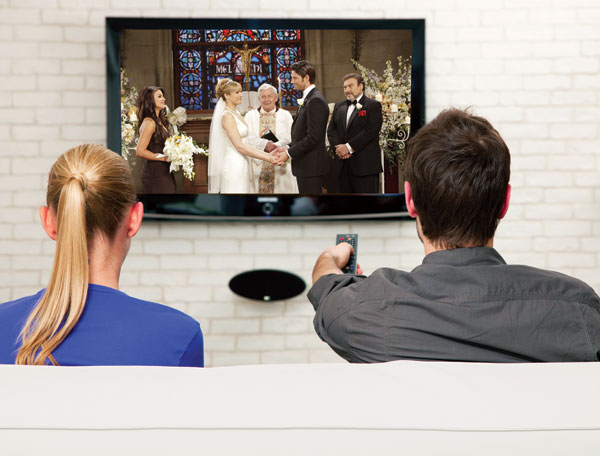How to Fix the ‘Soap Opera Effect’

Today’s HDTVs can do a lot more than TVs of yesteryear. That picture? Gorgeous! The option of streaming movies from the Internet? Amazing! Making long distance calls (for free!) with video? Cool. But, like many smart technical objects, it can be tricky to use. Here are some great ways to tweak your flat screen to get the most out of it.
1. Turn off the “soap opera effect.” You may have noticed that sports on your flat screen are spectacular. So crisp! So clear! But when you watch a favorite movie, the picture looks, well, weird. The soft, grainy quality you expect in a film is gone. Instead it looks like video—cheap and cheesy—sort of like an episode of All My Children.
Without getting too technical, here’s what’s going on and how to fix it. We’re used to watching movies at 24-frames-per-second, the industry standard for film. Many HDTVs have a feature called “motion interpolation” or “motion smoothing.” Your TV may have a different name for it—LG TruMotion or Sony MotionFlow—but the results are essentially the same. Motion smoothing artificially adds extra frames-per-second to make images less blurry. This is why sports programming looks so great. But, the effect can ruin the lush look of film.
Here’s the good news: You can turn off motion smoothing for movies. To zap the soap opera effect, you’ll need to delve into the scary world of TV settings. But don’t worry, we’ll walk you through it! In one Samsung model, for example, press the “Menu” button on the TV remote (not the cable remote), and choose “Picture Options.” Turn off the feature called “Auto Motion Plus.” The process varies by TV. Try menu/picture on your TV, and see if you can find it. If the solution is not readily available, crack open the user manual. Be assured: There is a way. Don’t leave this function off all the time, because you’ll want it on for sporting events!
2. Tweak for optimum viewing. Now that we’ve gotten you to the menu, look at other settings. If willing to adjust them a bit, you’ll see a prettier picture optimized for your room. Vizio TV owners can choose between several modes, including Standard (best overall choice for most environments); Movie (good for movie-watching in dark rooms); Vivid (more vibrant picture); and so on. If you want to get fancy, purchase a calibration disc (Blu-ray or DVD), which includes test patterns and scenes that let you match your TV’s color, contrast, and other settings precisely to broadcast industry standards. Several are available, but the disc from Digital Video Essentials (about $40, new) has gotten favorable reviews.
3. Turn your smartphone or tablet into a remote control. Face it, TV remotes stink: Too many tiny, cryptic buttons. Luckily, there’s a better way. Many TV manufacturers, including LG, Samsung, and Sony, offer free TV apps that let you use your smartphone and tablet as remotes. If you’re a pay TV subscriber, your cable or satellite provider may offer a free remote app too. The Xfinity TV Remote from Comcast Interactive Media, for instance, lets you change channels, browse TV listings, schedule DVR recordings, and watch shows on your tablet or smartphone. It works with most Comcast set-top boxes, as well as Apple (iOS) and Android devices too.
4. Use your TV for video chat. Some new HDTV features seem gimmicky. When changing the channel or lowering the volume, are voice commands or hand gestures really that much easier than a slick mobile app? Perhaps it’s too early to pass judgment, but one smart TV app really does have long-term potential: video calling. More TVs are adding built-in cameras with video chat. Skype is available on select TVs from major manufacturers—LG, Panasonic, Samsung, Sharp, Sony, and Toshiba. If your TV isn’t on the list, an add-on device is an option. Microsoft’s Xbox One entertainment console ($500), slated to ship in November, will include an HD camera and Skype software. And since Skype-to-Skype calls are free, you won’t get stuck with a big video chat bill.
Here are more ways to get the most out of your TV and other devices!
-
Stream On
How to get the most out of Netlifx, Amazon Prime, and Hulu Plus. More.
-
More Power to You
7 ways you can boost your Wi-Fi reception at home. More.
-
5 Secret Uses for Tablets
How your versatile tablet can go beyond Web browsing, Facebooking, and binge-watching Netflix. More.